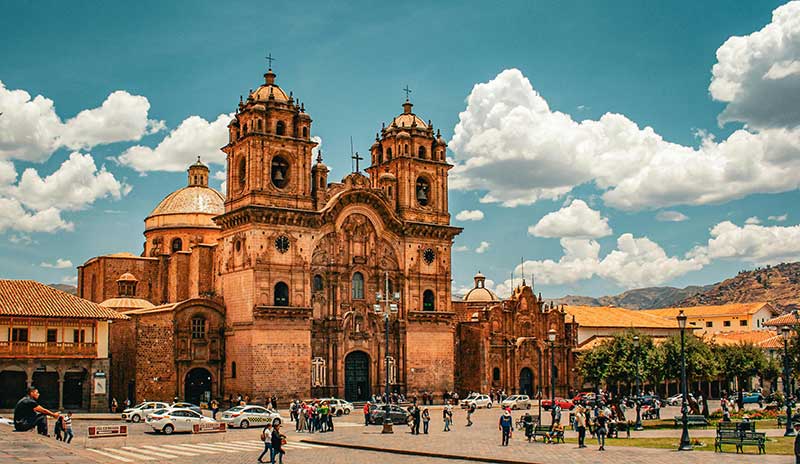
When you think of Peru, Machu Picchu is almost inevitably the first thing that comes to mind. However, this South American country offers much more than its iconic Inca citadel. From modern coastal cities to tropical jungles, ancient deserts and ancient villages, touring Peru is to immerse yourself in a vibrant mix of nature, history and living culture.
The key to exploring Peru to the fullest is to venture beyond the traditional tourist routes. Here are the top destinations for an authentic experience on Peruvian soil.
Lima: waterfront parks and cosmopolitan life
The Peruvian capital, Lima, with its more than 11 million inhabitants, is a city that combines modernity, tradition and world-class cuisine. Within its 43 districts, Miraflores shines as one of the most cosmopolitan, modern and vibrant in South America. But not only that: it is also home to some of the most beautiful parks on the continent, such as the Parque del Amor and the Malecón Cisneros, from where locals and tourists enjoy a spectacular view of the Pacific Ocean, especially at sunset.
In the financial district of San Isidro, the Westin Lima Hotel offers luxury and comfort with a world-class spa and a hidden bar serving cocktails with pisco sour, the national emblem.
Paracas: desert, sea and protected nature
Four hours south of Lima lies Paracas, a coastal paradise in the middle of the desert. Here, visitors can relax in seaside resorts and explore the Paracas National Reserve, famous for its biodiversity and the impressive Red Beach of volcanic sand.
From Hotel Paracas, set sail for the Ballestas Islands, a Peruvian mini-Galapagos home to sea lions, dolphins, Humboldt penguins, boobies and pelicans. All this in an environment that combines adventure, relaxation and first-class marine gastronomy.
Cusco: the Rome of South America
Cusco, considered by many as the Rome of South America, is much more than the gateway to Machu Picchu. It was the capital of the Inca Empire and still retains an original Inca urban layout, with cobblestone streets, cyclopean walls and colonial buildings on pre-Hispanic foundations. It is believed to be the oldest inhabited city in all of the Americas, and its energy and historical magnetism make it a must-see destination.
From Cusco you can explore the Sacred Valley of the Incas and travel routes such as the Lares Trail, a less traveled alternative to the classic Inca Trail, which allows a more intimate connection with the Quechua communities and their traditions.
Chinchero: weavings, tradition and living legacy
In the middle of the Sacred Valley is Chinchero, an Andean village where women continue to weave using ancestral techniques. The Awanallaqta Tocapo market allows visitors to see up close the dyeing and weaving process, all handmade with alpaca wool and natural dyes. The Quechua language is still spoken with pride, and each garment sold tells an ancient story.
Choquequirao: the hidden citadel of the Inca Empire
High in the Andes, among the canyons of Apurimac, lies Choquequirao, known as the "sacred sister of Machu Picchu". This impressive archaeological complex was one of the last refuge cities of the Incas and is believed to have been an important ceremonial and administrative center.
Choquequirao remains almost untouched, surrounded by dense vegetation, and only accessible by a demanding trek of several days. Unlike other destinations, its isolation has preserved its mysticism and offers visitors an intimate experience, far from the crowds. Agricultural terraces, temples, irrigation canals and elevated plazas attest to the splendor of this hidden gem.
Iquitos and the Amazon: rubber palaces and pink dolphins
In the northeast of the country, the Amazonian city of Iquitos surprises travelers with its history, architecture and biodiversity. During the rubber boom (late 19th and early 20th centuries), the region's richest men built majestic European-style palaces, many of which remain well preserved to this day, such as the Casa de Fierro, designed by Gustave Eiffel.
From Iquitos, you can navigate the Amazon River and explore the deep jungle, where visitors can live the incredible experience of swimming with pink dolphins in their natural habitat. A magical encounter that only the Peruvian Amazon can offer.
Caral: the cradle of civilization in America
Just 200 kilometers north of Lima is Caral, considered the first city in America and one of the oldest in the world. With an estimated age of 5,000 years (approximately 2,600 B.C.), Caral was a complex society that developed peacefully, without traces of weapons or fortifications.
The archaeological site is home to monumental pyramids, ceremonial plazas, residential areas and an advanced irrigation system. Declared a UNESCO World Heritage Site, Caral demonstrates that civilization in Peru flourished thousands of years before the Incas, positioning the country as one of the great original centers of culture on the planet.
Exploring Peru beyond Machu Picchu allows you to discover an unparalleled cultural and natural wealth. From its ancient palaces in the Amazon to its parks facing the sea, its living fabrics, ancient ruins and Inca cities still inhabited, this country invites travelers to reconnect with the origin of American civilization and to be surprised in every corner.
El Autor
